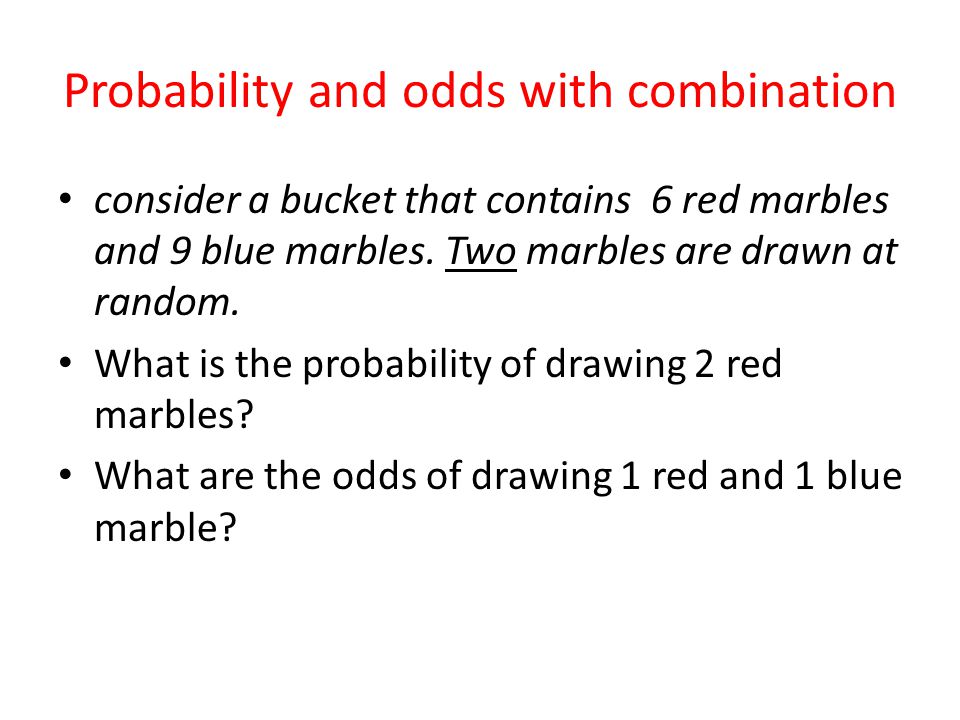Probability examples a jar contains 30 red marbles 12 yellow marbles 8 green marbles and 5 blue marbles what is the probability that you draw and replace marbles 3 times and you get no red marbles.
Combination probability marbles.
A bucket contains the following marbles.
Thus we have 6 56 combinations having at least 2 yellow marbles 330 b from 4 yellow marbles we can select 2 marbles in 4c2 ways 6 ways.
If we got a red marble before then the chance of a blue marble next is 2 in 4.
Find the probability of pulling a yellow marble from a bag with 3 yellow 2 red 2 green and 1 blue i m assuming marbles.
Selecting k objects from n objects is given by.
In part a above we looked at all possible draws from that list we only want the ones that contain only red.
4 red 3 blue 4 green and 3 yellow making 14 total marbles.
And so this is sometimes the event in question right over here is picking the yellow marble.
Each marble is labeled with a number so they can be distinguished.
From 3 green balls we can select 1 green marble in 3c1.
Yellow 1 yellow 2 bag 1 blue 1 blue 2 bag 2 red 1 red 2 bag 3 how many combination are there for picking 2 different color with the label in mind.
A bag of marbles containing 4 white marbles and 6 red marbles.
2 blue and 3 red marbles are in a bag.
Combinations losing your marbles.
So they say the probability i ll just say p for probability.
So the next time.
The probability of picking a yellow marble.
The chance is 2 in 5.
But after taking one out the chances change.
If we got a blue marble before then the chance of a blue marble next is 1 in 4.
What are the chances of getting a blue marble.
In this video we cover step by step one of the basic types of combination problems.
Probability of selecting marbles.
If we randomly select two marbles from the bag what is the probability that the selected marbles are of different colors in other words one white and one red.
But what if the marbles are labeled with number like this.
How to solve combination problems that involve selecting groups based on conditional criteria.
This would be a combination problem because a draw would be a group of marbles without regard to order it is like grabbing a handful of marbles and looking at them.
There are 55 marbles 25 of which are not red p getting a color other than red p 25 55 455 probability of this happening 3 times in a row is.









